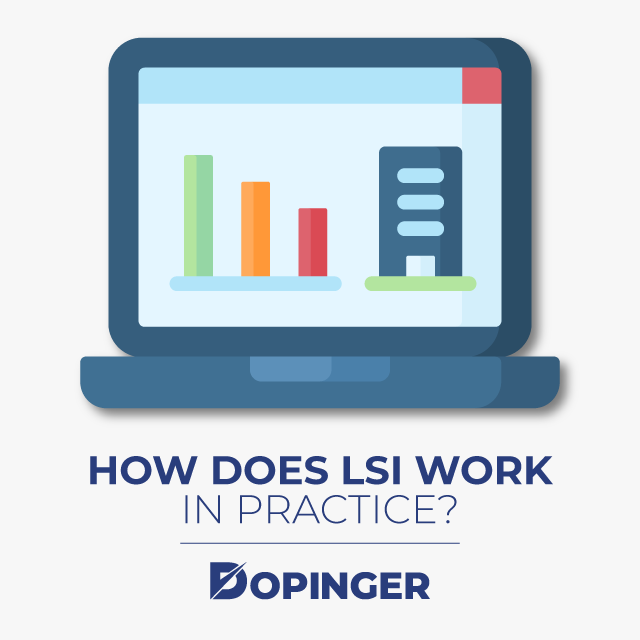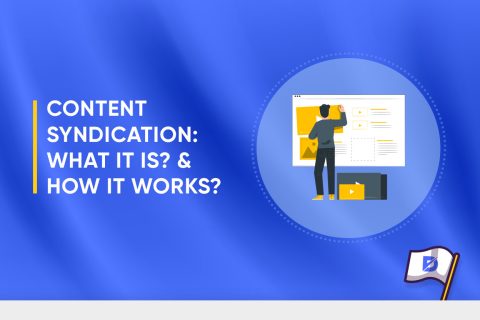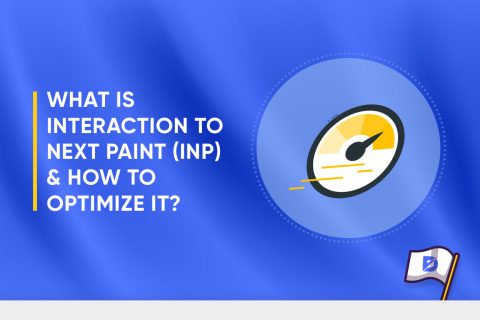Today, we will talk about LSI or Latent Semantic Indexing. Keyword, alt tag, meta description, H1, H2, we all know what they are. But are they enough for SEO optimization? To optimize a website in the best way, it is necessary to go beyond the conventional SEO techniques.
When you write web content, you have to be careful not once, not twice, but three times to everything you write, not only within the various tags. The search engines are very intelligent, and they immediately understand if someone is trying to cheat or create content for the web of little or no value for the end-user. Want to know how to make Google understand that your content is pure gold? And maybe you would also like some concrete suggestions on how to produce content for the web capable of jumping high on search results?
Don’t you have a clue what this term means? Don’t worry; we can fix it quickly: in the next few minutes, a fairy world of mathematical algorithms, synonyms, and unconventional SEO will open up – and it is very effective!
All written in a simple way, so don’t be afraid, no engineering degrees, being an SEO expert, or Mr. Robot is needed.
No, all you have to do is get rid of distractions around you, set the right brightness level for optimal reading, and read the following calmly!
So… What Is LSI?
In simple words, Latent Semantic Indexing is a technique used by search engines to find out how the different words of digital content are related.
LSI is an indexing method that allows you to identify what relationships exist within a document through a specific mathematical technique.
Did you think that Google looks at your texts as you look at Egyptian hieroglyphics without understanding anything? Mistaken! This is because you think about the old mechanisms used by search engines.
What Did LSI Introduce, & Why Was It a Big Change for Search Engines?
Let’s go back in time: searching for a specific document within a specific database, a search engine, actually searched for it in every archived document, and returned only the texts that included the exact word.
The mechanism was very simple, but the result could sometimes be very disappointing.
The LSI method has changed the cards on the table. The search engine no longer searched for the exact copy of a word. It went further, examined the contents of the database from a higher, and at the same time, a deeper perspective. It compared the whole sets of words from different documents with each other, looking for relationships beyond the mere repetition of a keyword.
The revolution of the LSI is to be able to identify any semantically close documents. And the beauty lies precisely in the fact that for this proximity to be identified, the search engine doesn’t need to find an exact match!
The Extreme Uselessness of Risking Keyword Stuffing
This has essential consequences that I will explain shortly. Still, there is a special consequence that I can’t keep to myself for another paragraph: the fact that a search engine can identify documents semantically close without having to resort to exact matches means that keyword stuffing is really, and in all respects, useless, as well as harmful.
It is not worth risking being penalized by Google because of repeating keywords too often. The first lesson that LSI gives us is that the synonyms of the keyword – and more generally, the context in which they have fallen – help optimize web content!

How Does LSI Work in Practice?
To understand how LSI works in practice, there is nothing better than starting immediately with a practical example.
Well, let’s assume that a page of your website talks about cake molds.
The page title will most likely be something like ‘What are the best cake molds?’ Or ‘Cake molds: everything you wanted to know and never dared to ask for.’
What does a search engine do when reading one of those headlines, based on what we’ve learned so far about LSI?
Simple: it will begin to hypothesize what it can find in the text. Indeed, since the search engine is also an arrogant trick, it will not only speculate what could be in the text but also what that text should contain to be considered as valid and useful.
‘Oven,’ ‘tarts,’ ‘donuts,’ ‘metal,’ ‘sweets,’ and ‘cake pan’ are probably the main words that the search engine will expect to find in that specific web content.
After all, that’s what you’d expect, too, right? How could you positively evaluate an article with that title related to cakes that speak instead of the monkey with a snub snout?
It would be completely useless. No one looks for information on a monkey by typing the words ‘Cake molds’ on Google. Here: the search engines think the same way.
How Does This Method Understand What’s in a Web Content?
Does the LSI method allow a search engine to ‘understand’ what is written inside a document?
No. It doesn’t even come close. Despite this, the degree of precision that this technique can give is truly amazing, and in this case, we can truly say ‘blissful ignorance’!
The concept is quite simple to understand. Contrary to what happened in the ‘classic’ search processes, in which one went to see which words were contained in a document, the LSI technique involves discovering which other documents contain the same words in the original content. When an LSI-based system finds two documents with many words in common, it qualifies them as semantically close, even if it knows nothing of what is reported in that text.
Everything is clear so far, right? Well, now, let’s try to understand what the knowledge of this technique can do for you!
Why Is Knowing How LSI Works So Important?
Who always give enormous importance to the words to be included in the title and the alt tag? You always concentrate your residual energies after drafting a text, putting the most important words in bold and in italics. Do you now understand that you must pay the same attention to your web pages’ entire content?
The search engine does not stop at the analysis of the various tags. It does not limit itself to checking what you ask it to analyze by putting it in bolds and italics. No, it would be too simple, even stupid: Google scrolls all the text looking for synonyms and terms semantically close to the keyword.
In short, no, for SEO and copywriters, there is no moment of quiet, not even between one tag and another!

For the User and the Search Engine
The LSI, for the search engines, is a handy tool for concretely selecting which content is worthy of being shown first to users.
Starting from the fact that Google can understand if a text fulfills the promises made in the title – you cannot and must not title a text to minigolf if you then talk about carrots! – thanks to LSI mechanism, all the worthless contents, artificially constructed to pump a keyword, are evaluated as pure garbage.
To understand what Google likes, in short, the rule always applies to wonder if that given content can satisfy users: if it contains useful, original, coherent, and well-written information, well, most likely, it will appeal to users, and therefore also to search engine. Of course, producing good content will not automatically guarantee you first place on search results, but it will undoubtedly help you progressively!
So, we now know that LSI can help you with your SEO. But how, in practice? Let’s start from the beginning. How can you find the right words to use in your Latent Semantic Indexing perspective texts?
How to Find the Right Keywords for LSI? Time for Tools!
There are several ways to find the keywords to use in your texts to optimize them to the maximum from the LSI point of view. The first is simpler, you have it practically always under your nose, and you probably haven’t even noticed much of it.
Google Has Your Back
Have you ever seen the suggestions that Google gives you when you type your queries in its search bar? Surely. And do you know why they are important? Because the words that Mr. G. suggests to you are those that he associates with that specific term.

If I type the word ‘wardrobe’, Google tries to refine my search by suggesting under the terms “green wardrobe,” “Ikea wardrobe,” “built-in wardrobe,” etc. This can be a starting point: inserting some of these suggestions into your text – obviously, those that make sense; otherwise, users could legitimately be suspicious – can put you on the right track.
How about turning the content you trust most into a lead generation tool with content syndication? You can market many types of content this way, such...
Google recently changed the balance by introducing a metric called next-paint engagement (INP) to track page experience. INP stands out as an empirica...
In this sense, a slightly more powerful tool is Google Keyword Planner. Another Google tool that SEOs have come to know quite well. As you probably know and have already done, to use this tool, you need to create a Google AdWords account.
Haven’t you done it yet? No problem; if you don’t want to do advertising campaigns, you don’t have to feel obliged. All you have to do is register within AdWords and then intelligently take advantage of the Keyword Planner tool.
Not only will you be given new ideas by entering your keyword, but you will also be shown the research that those particular suggestions have collected, and how competitive they can be.
There’s Also an Expert
Until now, the tools that I have proposed are not specifically designed for keyword research in the LSI perspective. However, there is a tool created specifically for this purpose. It returns a lot of useful terms for optimizing our texts. I am talking about the LSIGraph.com portal, incredibly simple to use, intuitive, and yes, really exhaustive.
What Are the Most Effective Words for LSI?
You have now figured out how to find many keywords to optimize your texts in an LSI key. However, you need to understand which of these are the most effective.
In most cases, you certainly cannot use them all: first of all, you must eliminate those that have nothing to do with your topic.
For example, if you sell wardrobes, the keyword “built-in wardrobe” will be perfect. While that “wardrobe in England” will probably be set aside. The trick is then to understand the reasons that should push users to look for precisely those concepts.
Don’t worry, as in general the intent of the users, is one of these three, the user:
- Searches for information on a specific object (what is a wardrobe?)
- Searches for more in-depth information on that object (what is the best material for a wardrobe?)
- L
ooking for a way to buy that object (where can I buy a wardrobe?)
These three directives must be the first criteria around which your texts should conform and, therefore, the words to be used for your web content. And then, use a dictionary!
Do you know what happens by following these simple rules? Your texts will respond to the users’ actual needs. And at the same time, they will be appreciated by the search engines.
Conclusion – LSI Is The Future!
Here you are: we hope you understand what LSI is and why it is important to know. Don’t forget what you have learned today because incredibly few people know this indexing method used by search engines. And even fewer knows how to exploit this knowledge in their favor.
So yes, use the right keywords in the titles, in the h2, and the alternative descriptions of the images, cleverly exploit the backlinks. But be careful not to repeat the same keyword, write consistent, search for related words, and use a dictionary!





No comments to show.